With its long wheelbase, mudguards and steel frame, the prototypical touring bike may look like a blast from the past of road cycling.
However, there are good reasons for the retro look that lead to a machine that’s versatile, durable and, above all, ideal for long day rides and multi-day trips, loaded up with everything you need for your adventure. It’s also good for commuting and other riding, as we’ll see.
- Best bike: our buyer’s guide to which bicycle type you should buy in 2020
- Best gravel bikes 2020: 27 top-rated picks
What makes a touring bike?
Frame material
Although you can tour on a frame made of any material, steel is ideal for this type of bike. It’s strong, can handle heavy loads and can be equipped with lots of mounting points.
It’s also easy to repair and to find replacement components for in far-flung places. Often the fork will be steel as well as the frame, for the same reason.
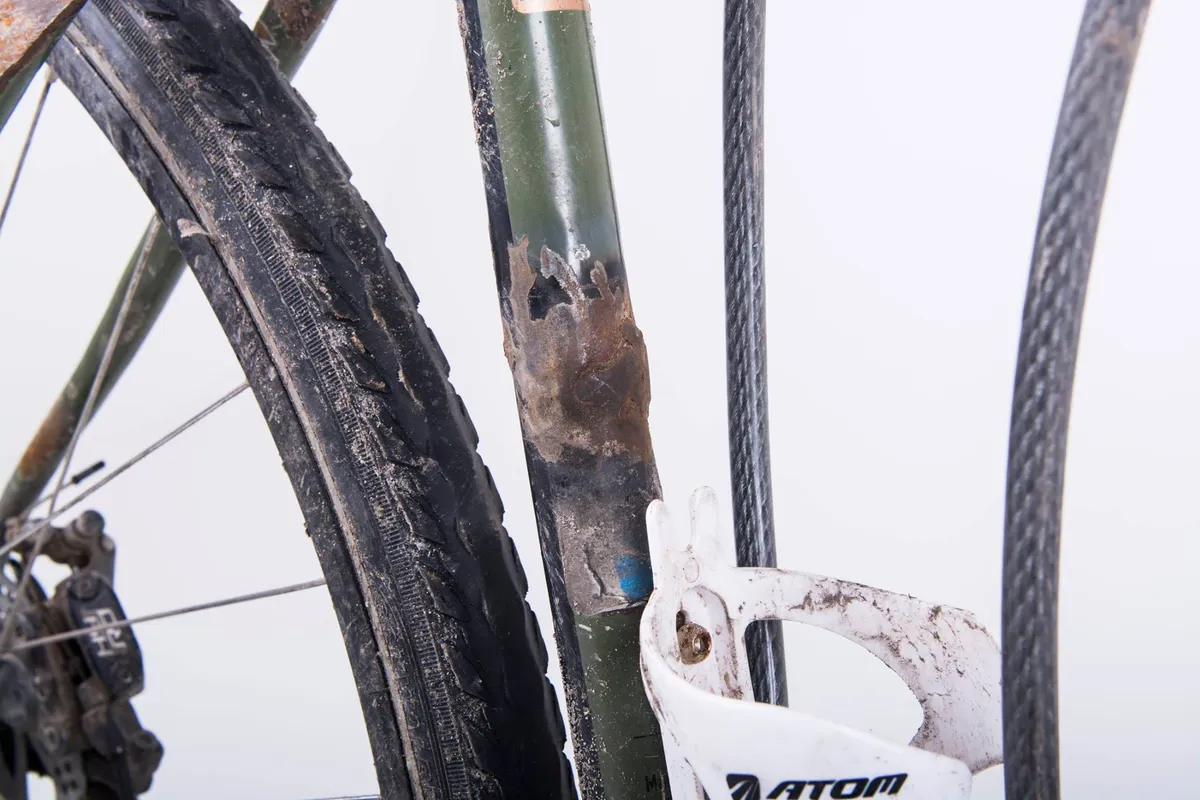
When Laura Bingham’s steel Genesis tourer was run over by a car as she rode the length of South America in 2016, a local welder fixed it and she was able to carry on in a couple of days. On a bike made of any other material that would have almost certainly been game over.
You may not be planning to travel that far afield, but that durability is great even for a smaller adventure – the last thing you want is a broken frame ruining your holiday.
Durable components
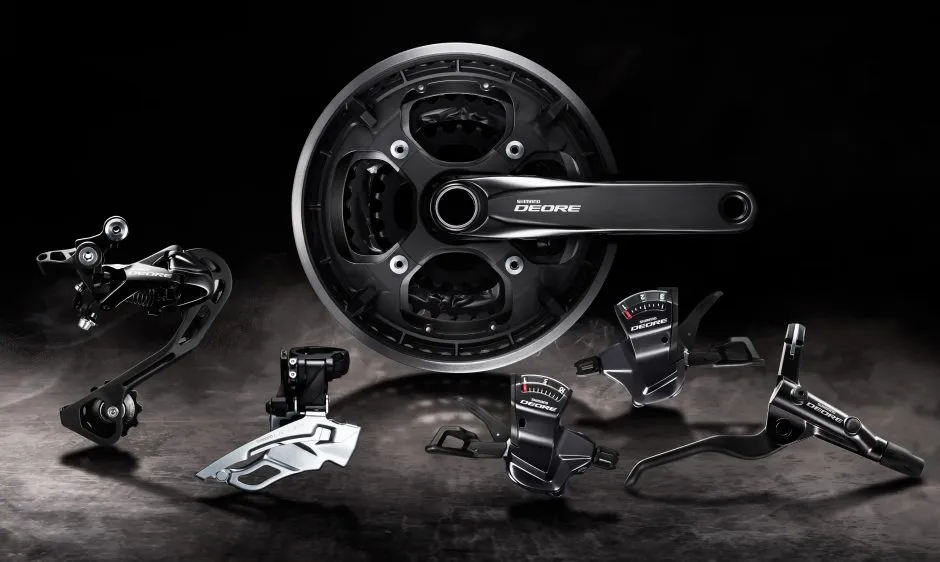
The same logic applies to components – tough parts are more important than saving a few grams.
With that in mind, wheels will typically be ultra-rugged with high spoke counts, well-sealed hubs and strong double- or triple-wall alloy rims.
Tubeless running helps with ride comfort, but the wise tourer will make sure that they are equipped with spare tubes, a tyre boot and a puncture repair kit too.
Dynamo power

It’s always good to have lights on your bike, even if you don’t plan to ride at night. Unless you plan on going old school with paper maps, you’ll also need to keep your GPS computer charged up.
Some touring bikes will come with front hub dynamos to give you a constant source of power that’s not dependent on mains electricity. The dynamo cable may run through the inside of the fork leg, to keep it out of harm’s way.
Mudguards
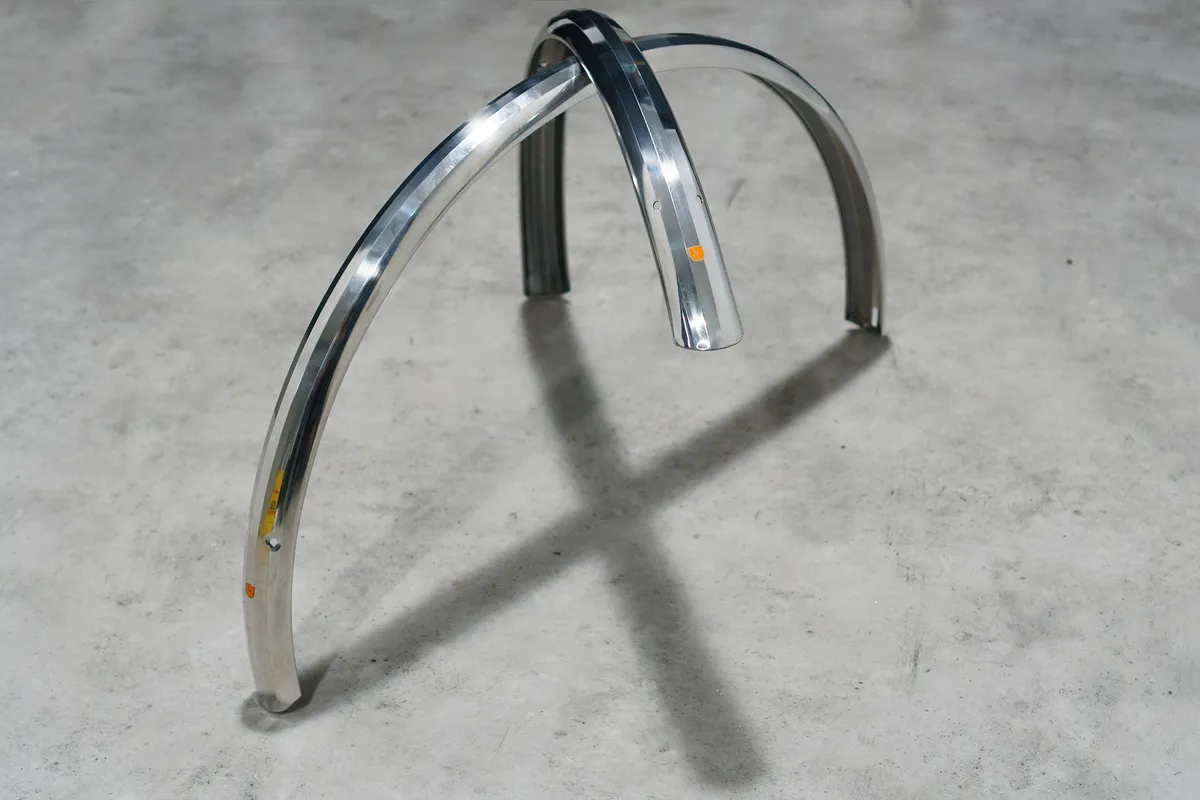
You’re not going to be able to choose your weather on a multi-day tour, so a touring bike will have mounting points for full mudguards. These help to keep you more comfortable and cleaner on wet days.
Disc vs rim brakes
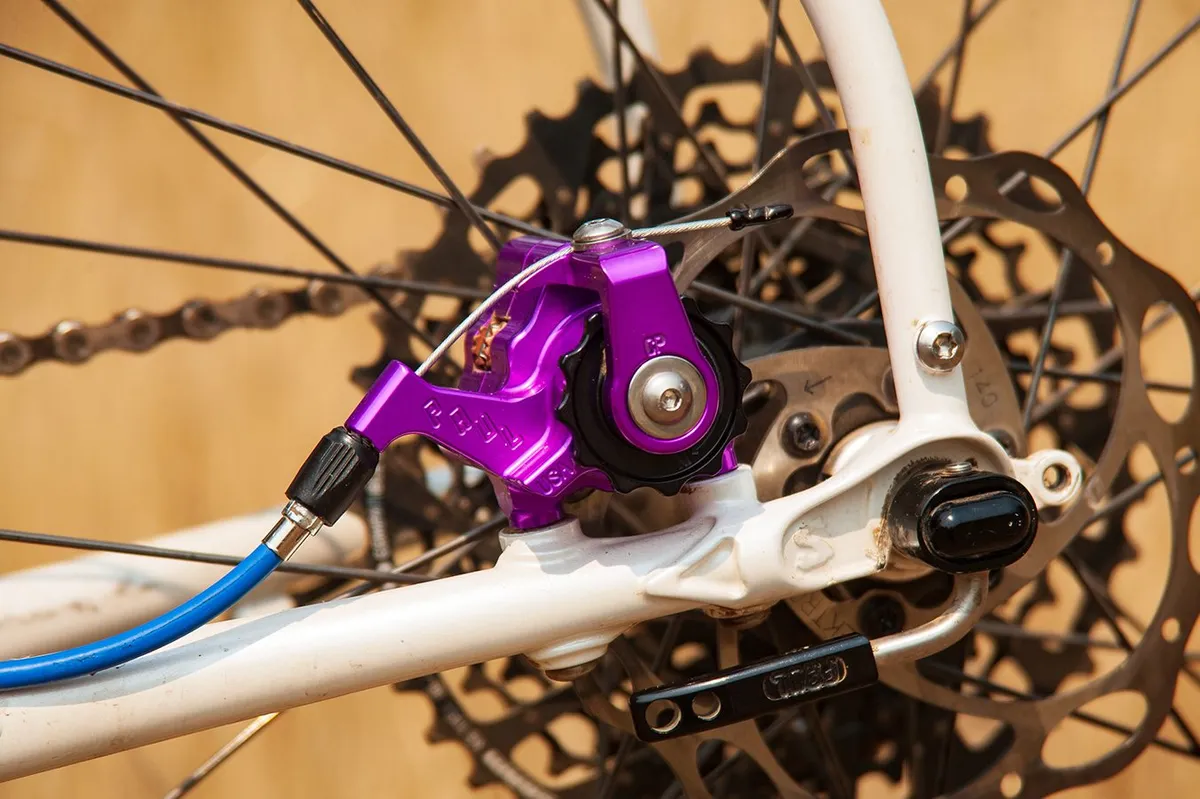
Nowadays, touring bikes will usually come with disc brakes in place of the v-brake or cantilever of old.
Discs offer much stronger braking on a laden machine and better all-weather consistency.
Worldwide availability of spares for disc brakes is still slightly lacking over traditional rim brakes, so there is still a small case for these. That said, reliability has massively improved in recent years, even for hydraulic disc brakes.
Geometry
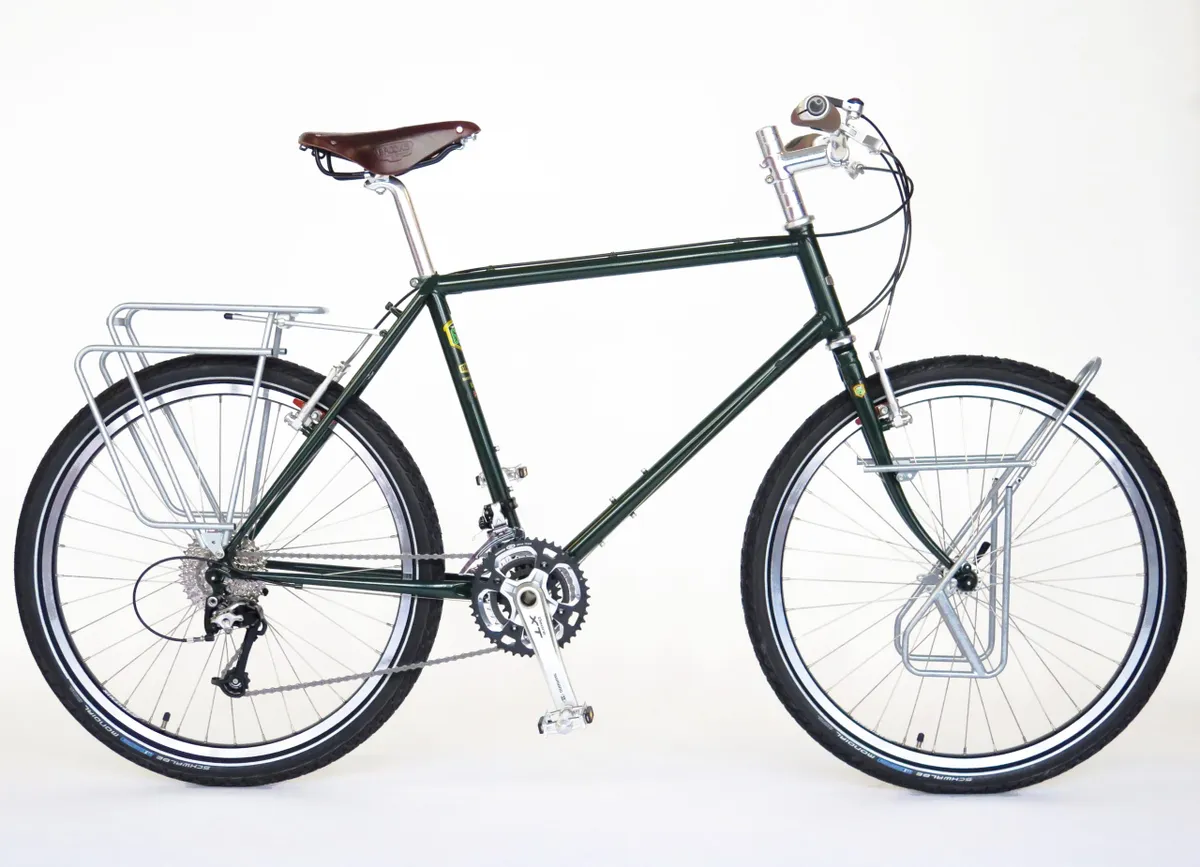
A touring bike’s geometry will favour stability too. It will typically have a long wheelbase and chainstays, and slack frame angles.
The longer wheelbase also means that it’s less likely that luggage or a front mudguard will get in the way of your pedal stroke.
A short-ish reach, often coupled to a riser stem, will give quite an upright ride position for comfort over long days in the saddle.
Drop bars will allow you to vary your hand position as you ride and lower your frontal profile on a day with persistent headwinds, although some touring bikes have flat bars. Trekking bars (aka butterfly bars) are also an option.
Touring bike gearing
A wide gear range down to 1:1, or lower, will help you get up hills on a heavily loaded tourer.
It’s still nice to have the top-end gearing to keep up a fast pace on flatter roads. I once spent a day riding down the Moselle valley and it included 100 or so miles of gentle downhill riding at a 20-plus mph average pace. It was great to have a big top gear in this situation.
Some tourers still come with a triple chainset, although modern double-ring groupsets will give you the same range.
Heavy-duty load-lugger
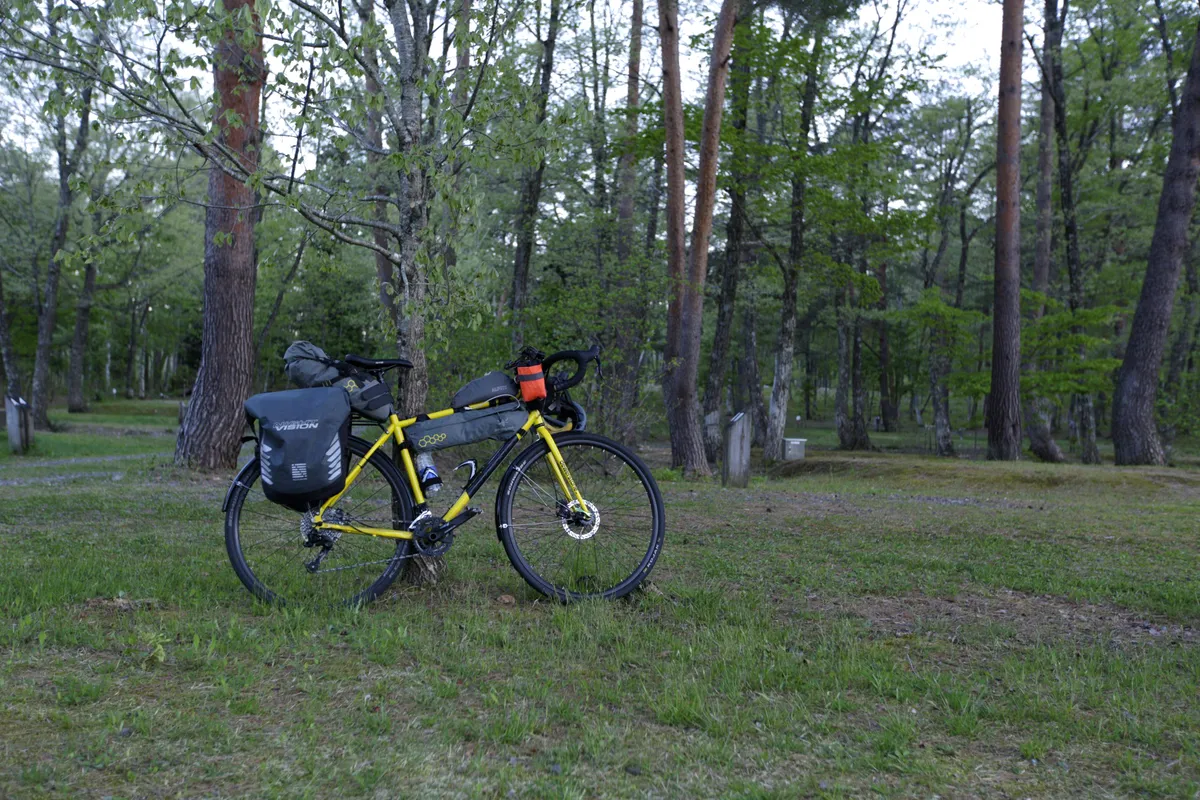
A touring bike is designed for multi-day rides where you’re carrying everything you need with you.
Depending on the ride that you’ve planned, that might include a tent, food, cooking gear, multiple changes of clothes, as well as wet and cold weather gear.
Or you might be riding between hotels or hostels and not need to carry so much kit.
Traditionally, that luggage is carried in panniers mounted on a front or rear rack. Load-lugging capacity might be increased further by a saddlebag, rack-top bag and a bar bag.
There are advantages to the more traditional pannier-centric set-up. Panniers keep the centre of gravity lower than newer and trendier bikepacking bags. They are also fixed more firmly to the bike, giving you more stable handling.
Panniers are out of the way at the front and rear of the bike and less likely to rub against your legs as you pedal. They are also easier to get on and off your bike because they are fixed with just a couple of clips rather than an array of straps that need to be tightened firmly.
On the downside, racks and panniers are heavier than bikepacking bags, and work best on a frame with rack mounting points, whereas bikepacking bags can be strapped to any frame.
What is the difference between a gravel bike and touring bike?
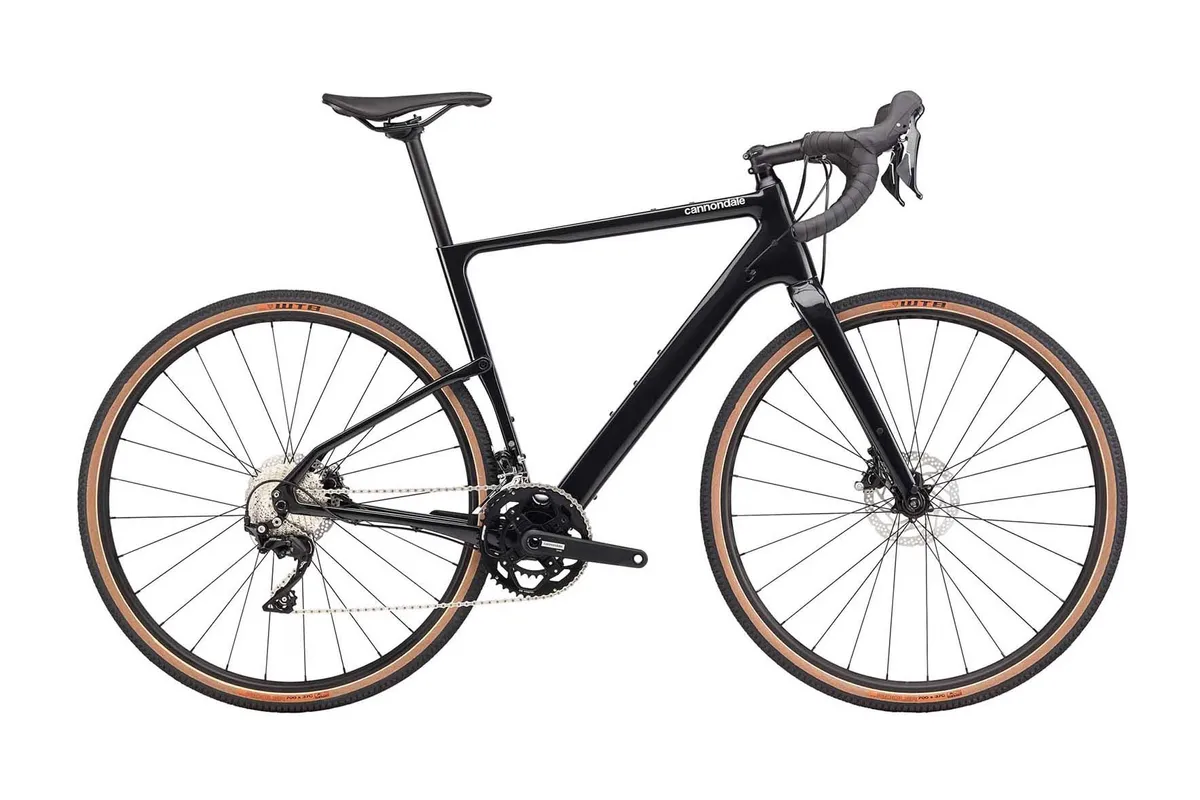
Touring bikes of old had quite tight tyres clearance, so there was a limit to how wide you could go.
That’s changed with newer touring bikes, such as the Genesis Tour de Fer, taking tyres up to 38mm wide and the Dawes Galaxy coming with 32mm rubber as stock. Both can take larger tyres should you wish.
Wide tyres, comfort and stable handling sound like features of a gravel bike, but a gravel bike is designed around off-road riding, whereas the majority of traditional touring bikes are designed with tarmac in mind.

Although you could fit knobbly tyres or ride unmetalled surfaces, a touring bike will usually come equipped with road-going rubber. Clearance to cope with mud build-up may not be as generous as on a gravel bike either.
A touring bike’s gearing will also be tuned for tarmac, often with a wide range to let you press on when riding on the flat and conquer climbs when loaded up.
With all of that said, some touring bikes, such as the Kona Rove, blur that distinction. This bike comes with the option of 47mm WTB tyres on 650b wheels in its classic steel frameset.
Many gravel bikes also have the option to run panniers and mudguards, so these shouldn’t be automatically discounted.
Not just for the long run
A touring bike can also be great for other cycling, not just multi-day adventuring. Being weather-proof and with its load-carrying potential, it’s a great option for the all-year commuter.
Panniers are ideal for shopping trips too. They’re easy to unclip from the bike and carry around a supermarket. For several years, a tourer was my only means of transport and I used it to travel to work and keep myself fed.
Plus, there’s the allure of heading off on a summer’s morning for a long, relaxed ride through the back roads, maybe with a picnic in your bags, as an antidote to the all-out blast on your carbon bike to up your threshold power and claim a few more KOMs/QOMs.
